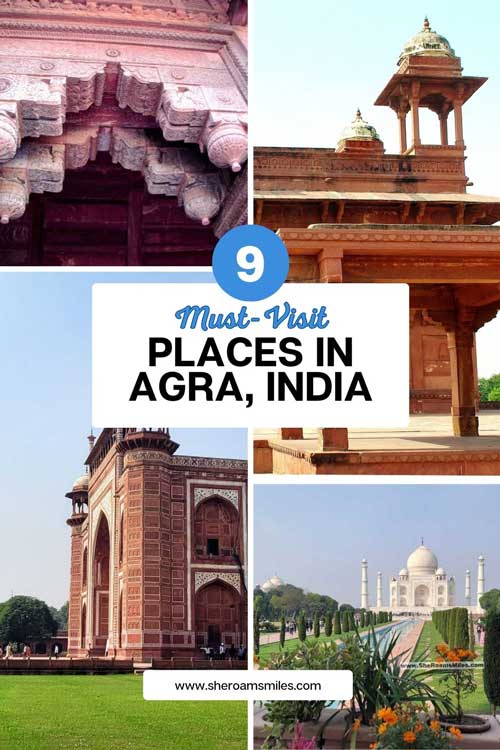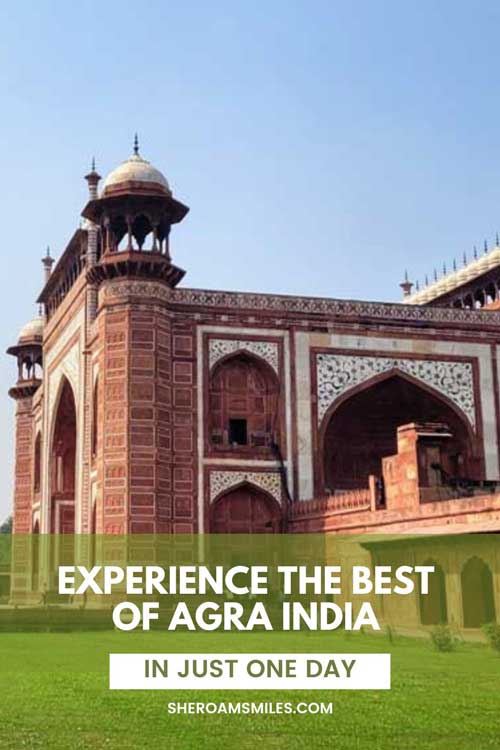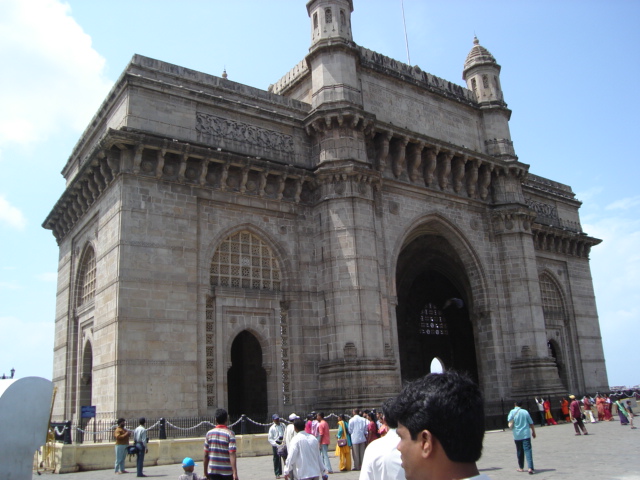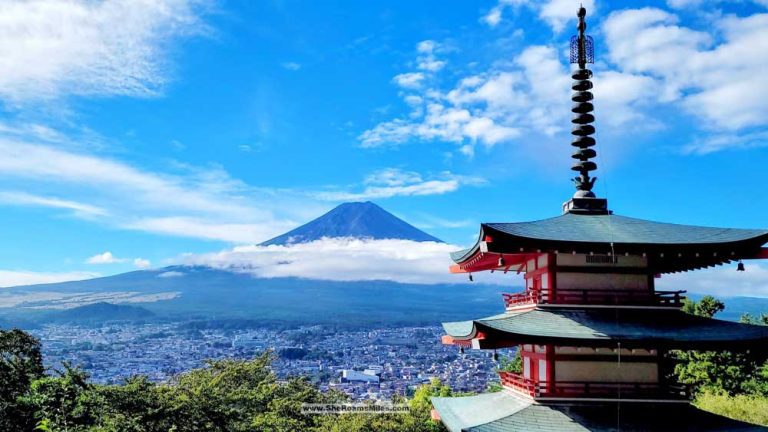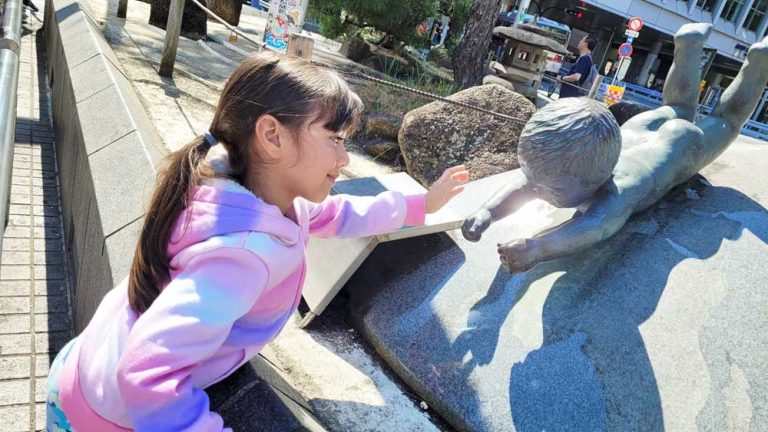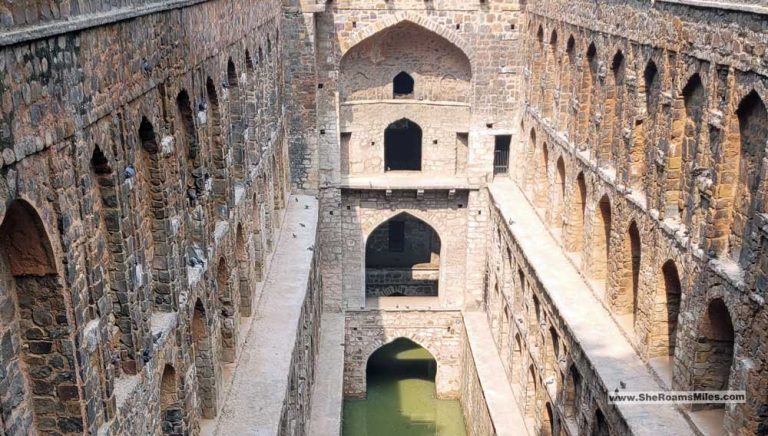9 Unmissable Things To Do In Agra in India
Are you ready to uncover the enchanting allure of Agra in India? This vibrant city, renowned for its colorful culture and breathtaking landmarks, beckons travelers with its rich heritage. As the legendary home of the Taj Mahal—one of the Seven Wonders of the World—Agra captivates the heart and soul, making it an unmissable destination for anyone seeking to experience the magic of India.
With so much to see and do in this historic city, planning the perfect itinerary can be overwhelming. But fear not, fellow travelers! In this article, we will explore 9 Unmissable Things To Do In Agra in India in just one day. From the iconic Taj Mahal to the bustling bazaars, get ready to embrace the beauty and magic of this enchanting city. So buckle up and prepare for a journey of a lifetime.
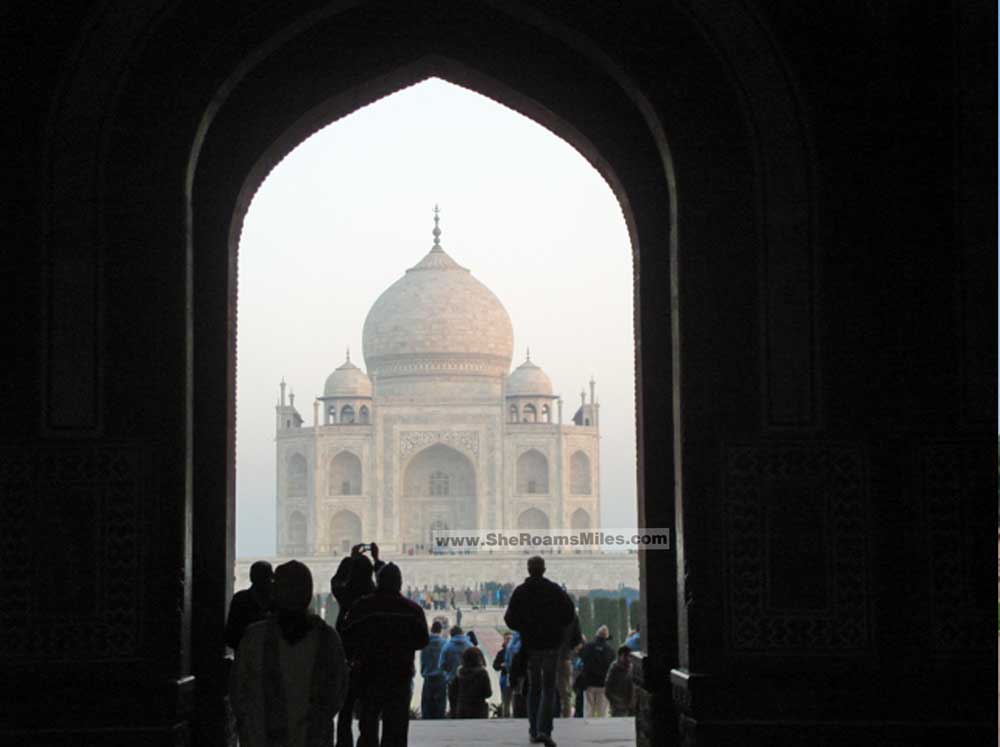
Welcome to Agra
Agra is located in the northern state of Uttar Pradesh, India. This city is steeped in history and renowned for its Mughal-era architecture. It lies on the banks of the Yamuna River, about 200 kilometers southeast of Delhi.
Agra is best known for the Taj Mahal, a UNESCO World Heritage Site and one of the New Seven Wonders of the World. However, this city has so much more to offer than just one stunning monument.
Another significant landmark is the Agra Fort, also a UNESCO World Heritage Site, which served as the main residence of the Mughal emperors until 1638. The city also boasts Fatehpur Sikri, a well-preserved ghost town that was once the capital of the Mughal Empire. Other notable sites include the Itimad-ud-Daulah (Baby Taj), Mehtab Bagh, and Akbar’s Tomb.
Agra’s rich history, combined with its architectural marvels, makes it a major tourist destination in India. The city’s vibrant markets and cultural heritage further enhance its appeal to visitors from around the world.
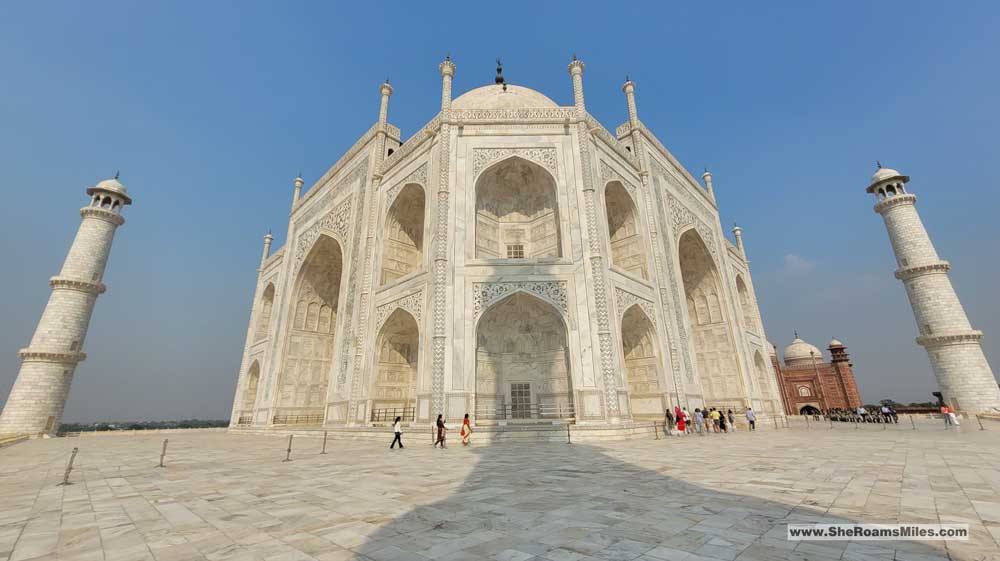
In this article, we will guide you through the 9 best things to do in Agra, India’s most famous tourist destination. From iconic monuments to cultural experiences, this 1-day itinerary has it all. So get ready to immerse yourself in the beauty and rich heritage of Agra. Let’s explore!
Map of Agra
How to use this map: This map is fully interactive, so you can move around, zoom in/zoom out, and click on the icons. If you want to see a larger map, click on the bracket in the upper right corner. To see more details and the different layers, click on the tab in the upper left corner.
Guided Tours in Agra
This itinerary uses a tour guide. Using tour guides in India can greatly enhance your travel experience for several reasons:
Tour guides provide unique insights and stories about the places you visit that may not be found in guidebooks. They also offer valuable cultural context and language assistance in diverse countries like India. Additionally, tour guides can ensure safety and convenience, provide access to hidden gems, offer personalized experiences, and help with time management.
Using a tour guide can transform your trip to India into a richer, more immersive experience. It allows you to connect deeply with the country’s vibrant culture and history.
If your base in India is in New Delhi, the tour below will provide you a climate-controlled car, a driver, a guide. They offer pickup service from your hotel in Delhi.
9 unmissable Things to Do in Agra in India
1. Tuk-Tuk Ride
Get ready for a wild ride in Agra, India! Exploring the bustling streets and iconic landmarks of this vibrant city is made even more thrilling by hopping aboard a tuk-tuk, also known as an auto-rickshaw. These compact and nimble vehicles offer a one-of-a-kind experience, zipping through narrow lanes and lively markets with ease.
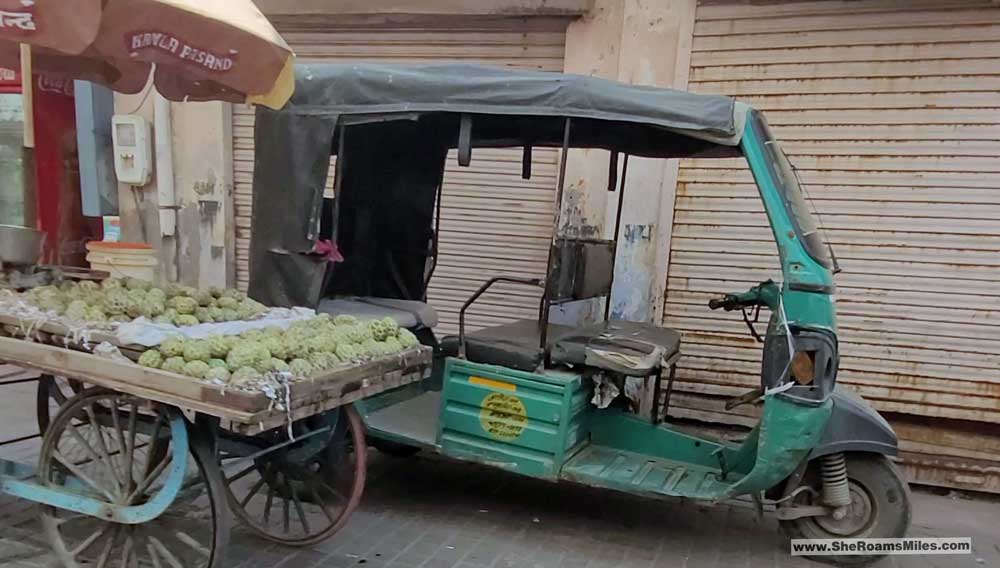
Our tour car came to a stop about a mile from the east entrance of the Taj Mahal, where our guide met us with prepaid entry tickets in hand. No need to wait in line for tickets – we were able to dive right into the cultural experience. And what better way to truly immerse yourself in the local flavor than by taking a tuk-tuk ride to the Taj Mahal gate? Along the way, you’ll have the chance to marvel at the thriving industries of Agra, known for its leather and stone inlay shops. This tuk-tuk adventure in Agra is an experience you won’t want to miss out on.
2. Taj Mahal
Welcome to the majestic Taj Mahal—a renowned ivory-white marble mausoleum in Agra, India. Recognized as a UNESCO World Heritage site in 1983, the Taj Mahal draws millions of visitors every year with its timeless beauty and historical significance.
It is also considered one of the New Seven Wonders of the World, winning in the New7Wonders of the World initiative in 2007. This prestigious recognition further showcases the architectural splendor and cultural significance of this iconic monument.
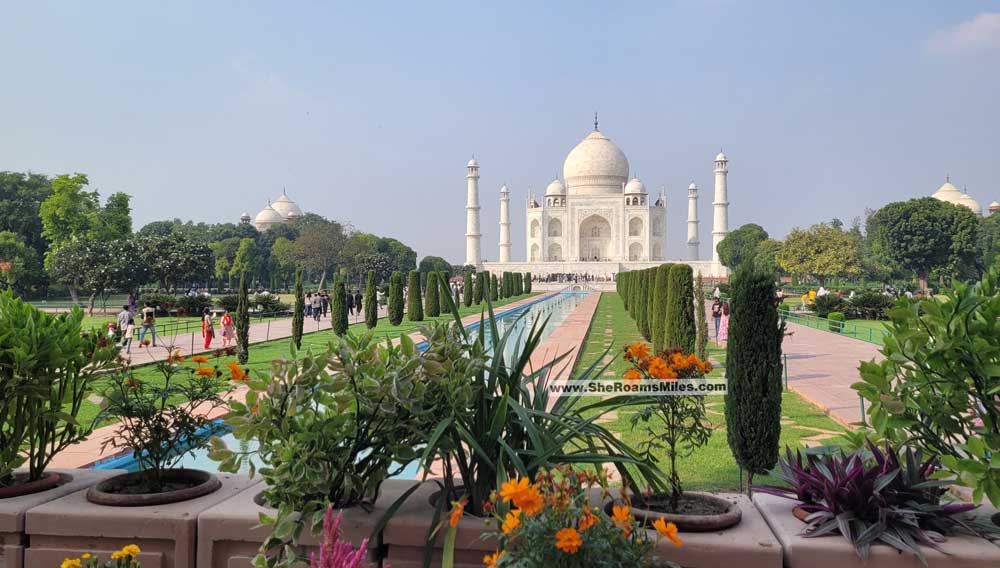
As you enter the Taj Mahal complex, you’ll have three main entry gates to choose from – each offering a unique perspective and experience.
- The West Gate provides a grand approach, being the main entrance and busiest gate.
- The East Gate, while less crowded, offers convenience for those looking to avoid long queues. It is recommended for tourists to enter through this gate.
- And although the South Gate is closed for entry due to security reasons, it can still be used as an exit.
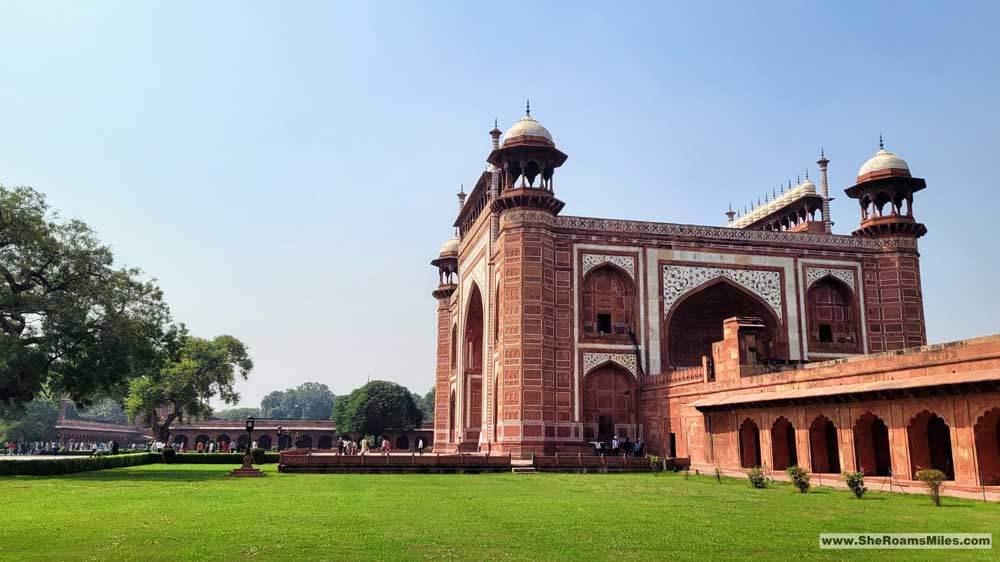
We chose the East Gate for our visit and it was not as busy at around 11am. However, there is a security check point with x-ray machines, but don’t let it deter you from bringing a bag of the right size for your travel essentials.
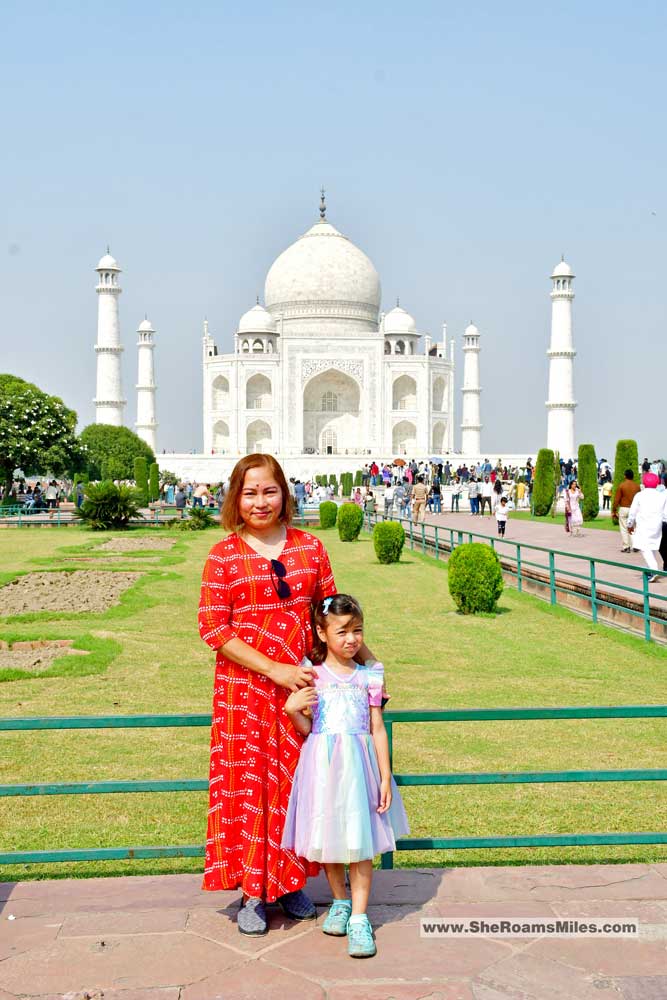
Plan a visit to the Taj Mahal and experience its breathtaking beauty and history for yourself.
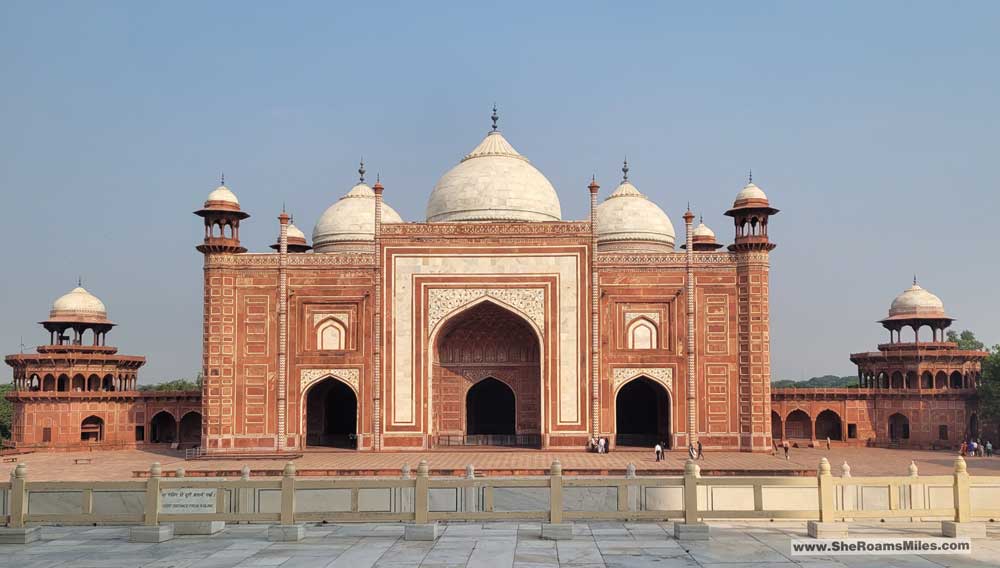
3. Lunch
After immersing yourself in the wondrous beauty of the Taj Mahal, your knowledgeable guide will lead you to a delectable buffet breakfast or lunch, if pre-booked, at top-rated establishments in Agra, India.
With a selection of top-rated options from 5-star establishments like Double Tree by Hilton, Bon Barbeque, Two Saints, Cairo, and Molecule, you can choose the perfect dining experience to complement your adventure. Our group chose to dine at Double Tree and although the menu featured all Indian cuisine, we left fully satiated and content.

4. Stone Inlay Shops
Discover the art of marble inlay in Agra, India. Known for its rich history dating back to the Mughal era, the city boasts exquisite marble works prominently showcased in the Taj Mahal.
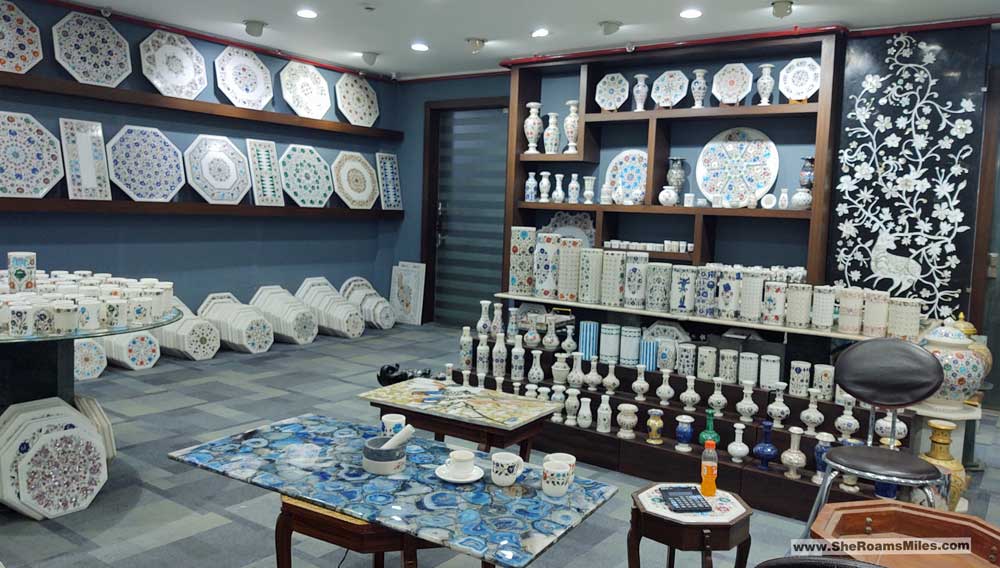
Immerse yourself in the beauty of this traditional craft by visiting the renowned Marble Emporiums and inlay shops. Marvel at the skilled artisans at work, and browse a variety of finely-crafted pieces, from small souvenirs to larger decorative items like tabletops and coasters. While some guides may be pushy in trying to secure commissions, make sure to prioritize your own desires and make the most of your time to fully appreciate this unique art form.
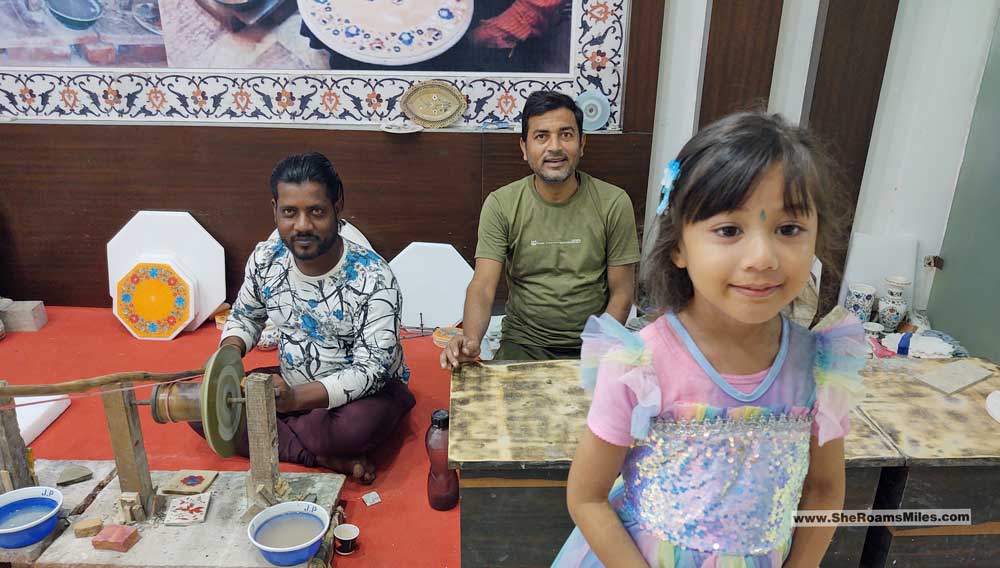
5. Leather Shops
Experience Agra’s renowned leather shops, where you can find high-quality leather products. From stylish footwear to a variety of bags, Agra offers an impressive range of genuine leather handicrafts.
Indulge in the finest leather products, known for their superior quality and skilled craftsmanship. From stylish footwear, including shoes, boots, and sandals, to a variety of purses and bags, jackets, and belts, Agra offers an impressive range of genuine leather handicrafts at competitive prices. Not only does the leather industry contribute significantly to the local economy, but it also upholds a rich tradition of unparalleled artistry and excellence. Don’t miss the opportunity to shop for authentic leather goods and support the heritage of Agra’s skilled artisans.
6. Agra Fort
Your guide will lead you to the impressive Agra Fort, a historical masterpiece and UNESCO World Heritage Site located just 2.5 kilometers northwest of the Taj Mahal.
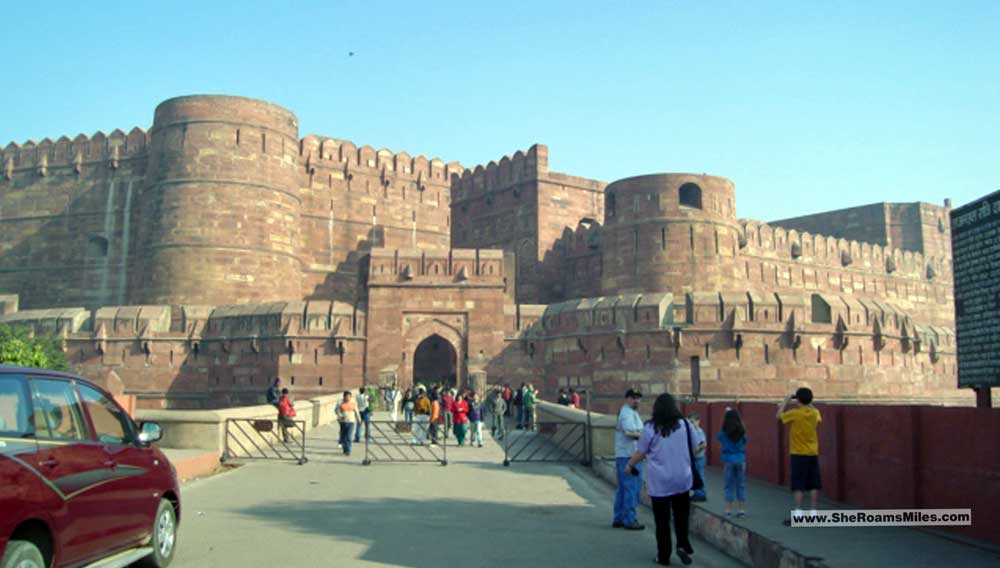
As a UNESCO World Heritage Site, the Agra Fort is recognized for its architectural brilliance and rich history. Located just 2.5 kilometers northwest of the Taj Mahal, it is a must-visit destination for travelers.
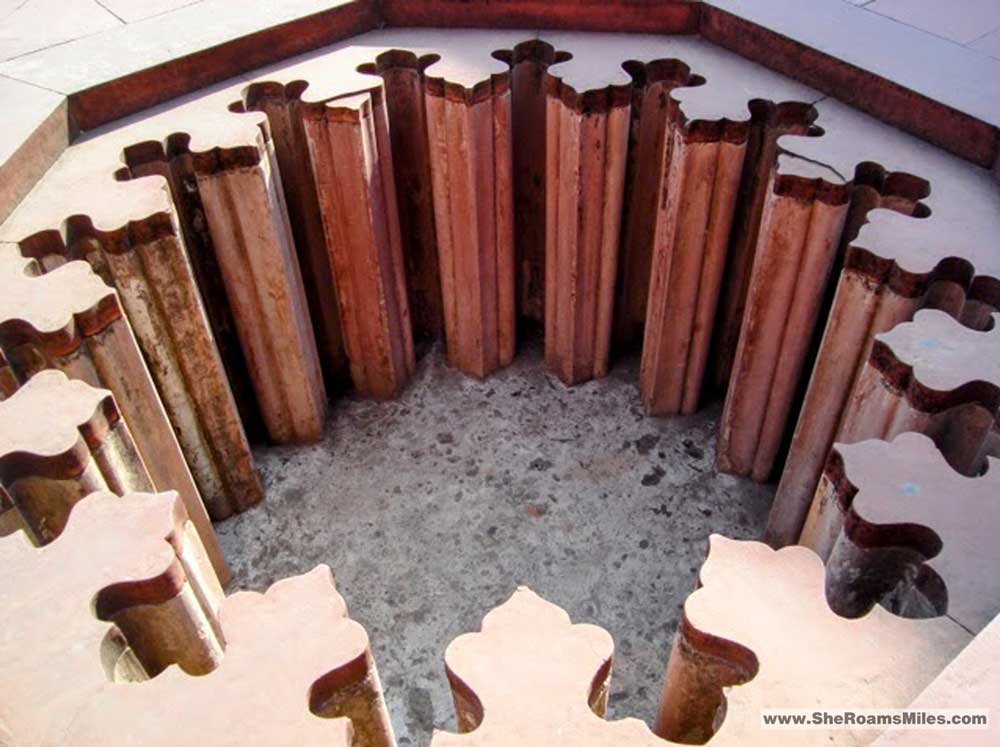
Also known as the Red Fort of Agra, this majestic structure was first built by Emperor Akbar in 1565 and later completed in 1573. It served as the main residence for the Mughal emperors until the capital was shifted to Delhi in 1638.
Within the fort’s walls, you’ll find a walled city containing palaces, halls, and mosques. The red sandstone walls give the fort a unique appearance, while the interiors boast important structures such as the Diwan-i-Aam (Hall of Public Audience), Diwan-i-Khas (Hall of Private Audience), and the stunning Jahangir Palace.
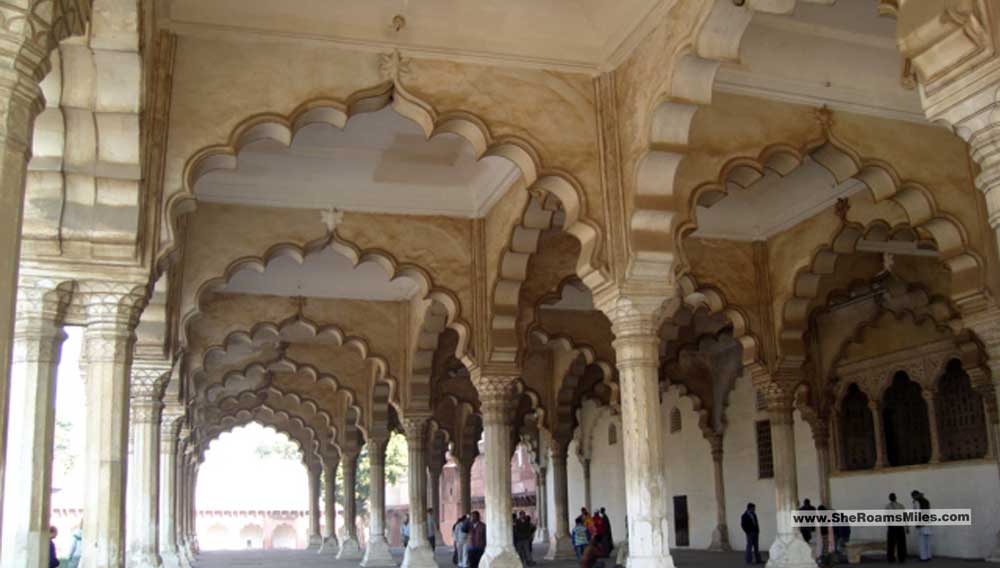
An interesting feature of the fort is the Musamman Burj, a tower where the emperor who built the Taj Mahal, Shah Jahan, was imprisoned by his son Aurangzeb.
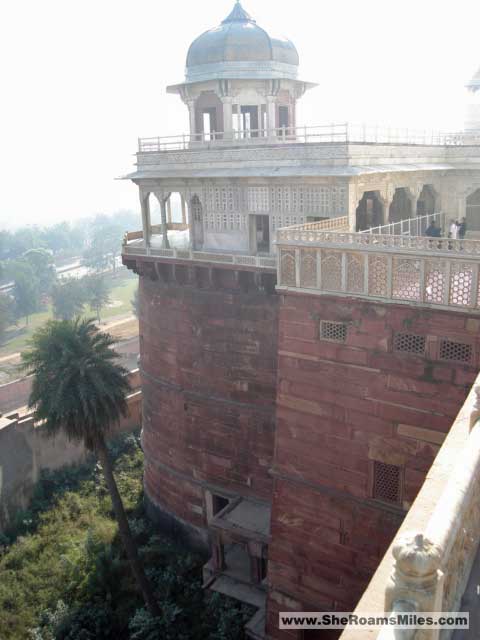
With its magnificent architecture and strategic location on the Yamuna River, the Agra Fort served as both a military stronghold and a royal palace. It is a testament to the diverse building styles and tastes of the Mughal rulers who built it, including Akbar the Great, Jihangir, Shah Jahan, and Aurangzeb.
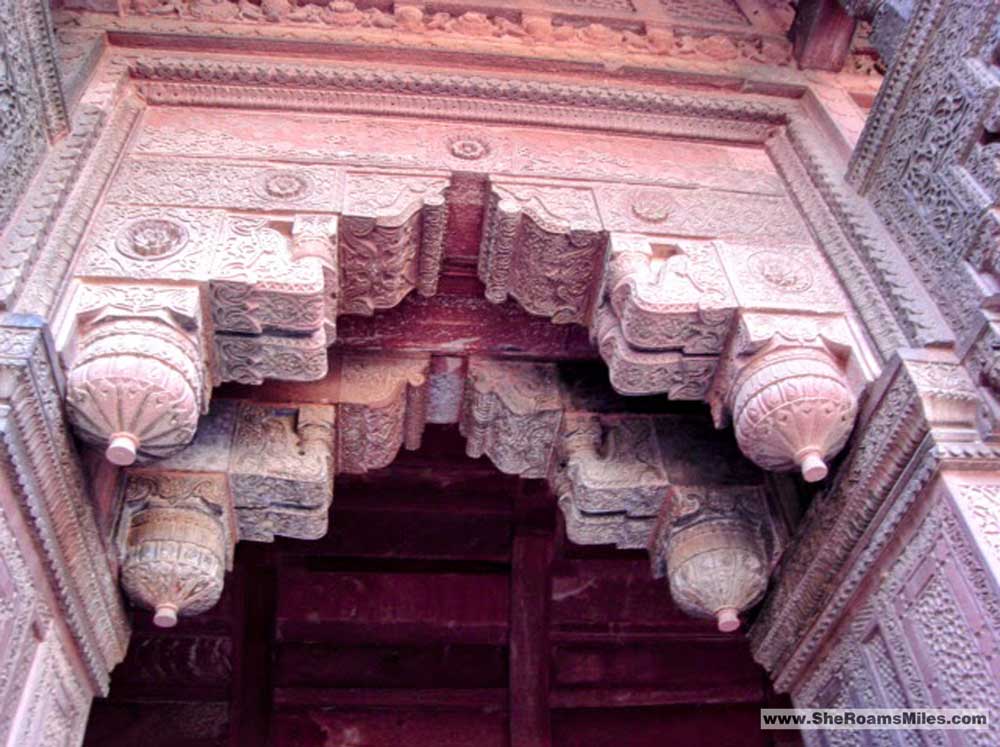
Covering several square kilometers, the Agra Fort is a massive structure with approximately 70% of it accessible to visitors. Don’t miss the opportunity to explore this impressive historical site when visiting Agra.
7. Baby Taj
If you have more time, the guide may be able to bring you to the Baby Taj. The Tomb of I’timād-ud-Daulah, also known as the “Baby Taj,” is a beautiful Mughal mausoleum in Agra, India. Its design marks a transition from earlier Mughal architecture to the perfected use of white marble in the Taj Mahal.
Considered a precursor to the Taj Mahal, the tomb is often referred to as a “jewel box” and showcases the artistic and architectural advancements of the Mughal era.
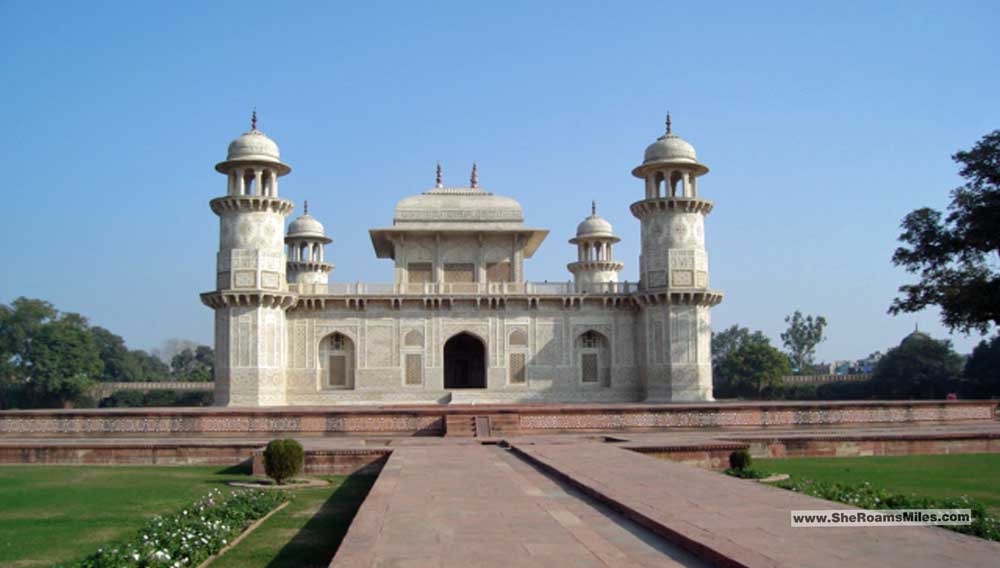
8. Mehtab Bagh
Mehtab Bagh, also known as the “Moonlight Garden,” is a stunning Mughal-era garden located in Agra, India. The garden was originally built by Emperor Babur in the 16th century, but it was Emperor Shah Jahan who rebuilt the garden to protect Taj Mahal from the abrasion of sand.
This stunning Mughal-era garden in Agra offers a peaceful oasis for visitors, featuring a mesmerizing view of the Taj Mahal from a unique perspective, making it a popular spot for photographers and travelers.
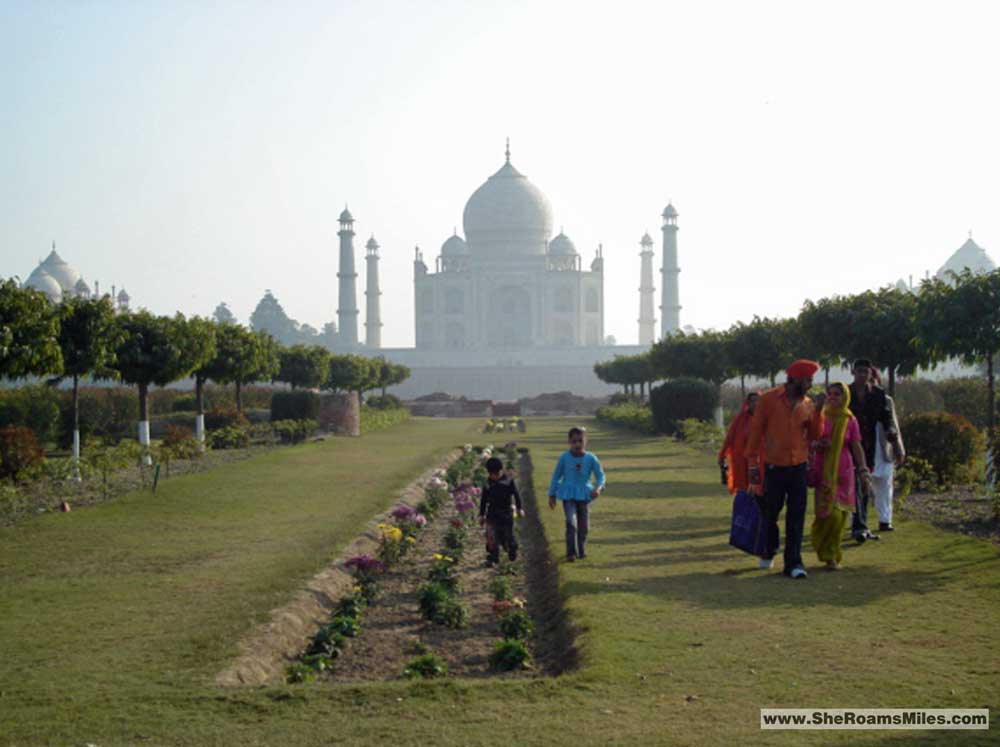
9. Fatehpur Sikri
Located just 40 kilometers from Agra, this grand city: Fatehpur Sikri built by Mughal emperor Akbar showcases stunning architecture and reflects the empire’s greatness.
Despite being abandoned due to water scarcity, it continues to inspire visitors as a symbol of the Mughal Empire’s might and ambition, a source of pride for Indians and a marvel for travelers, showcasing India’s cultural diversity and religious harmony.
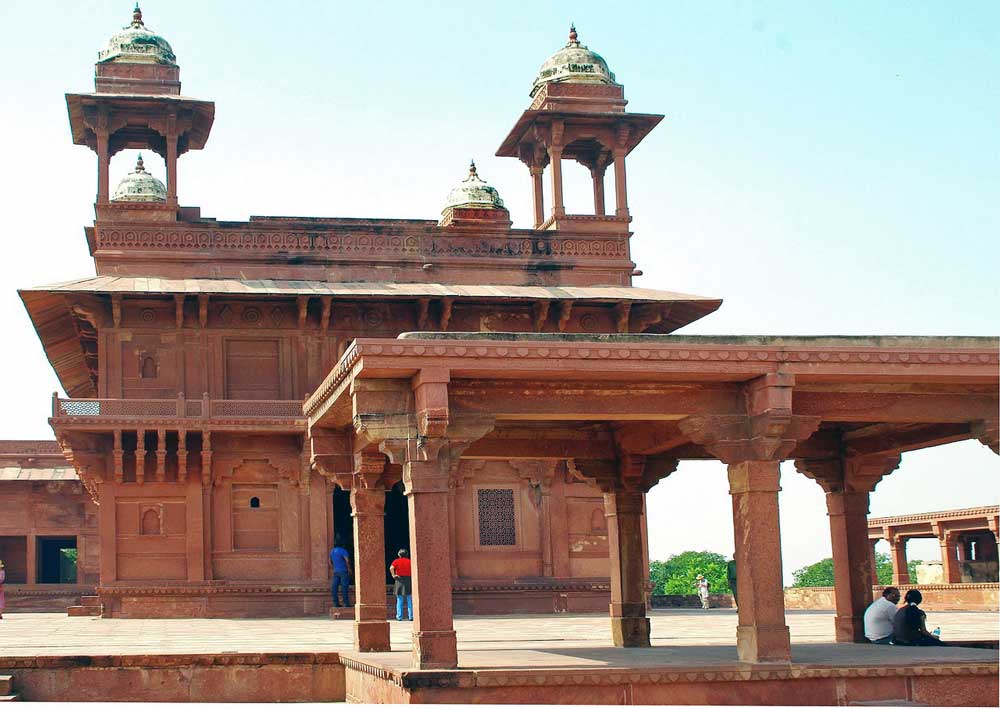
Conclusion
In conclusion, Agra in India offers a glimpse into the rich history and cultural heritage of this magnificent city. From the iconic Taj Mahal to the bustling markets and medieval forts, there is something for everyone to explore in just one day. As we have learned, with careful planning and strategic time management, you can make the most out of your visit to Agra and create unforgettable memories.
Remember, while this is 9 of the unmissable things to do in Agra in India, this is just a taste of what this city has to offer and there is always room for more adventures and discoveries.
Useful Info for Your India Trip
Where to Stay in Agra
Agra offers various accommodations to suit different preferences and budgets.
- Luxury: The Oberoi Amarvilas Agra
- Mid-range: ITC Mughal, A Luxury Collection Resort & Spa, Agra
- Budget: Taj Classic Agra
Tourist Visa
Before you can start planning your trip, you have to check the visa requirements to enter India first. You can check it here. United States citizens are required to have visa to visit India. Nowadays, we can get e-Visa where you quickly apply online, and pay the small fee (about $25 at time of writing). You will get an email in about two days of visa decision, either granted or denied. Denial is a rare case, but overall, they want tourists to visit the country. The process was fast and smooth.
Driving in India
India is a right hand drive country. With this itinerary, you should not have to worry about dealing with driving in whatever side of the road. Traffic is Delhi is heavily congested. People blow their horns normally, where it would be offensive in other countries.
Safety in India
As of November 2024, the population of India is approximately 1.455 billion people. We stayed for only two full days in India. With this itinerary we felt safe and did not experience any concerns at all.
Delhi Belly
Food poisoning can be a concern for tourists in India, often referred to as “Delhi Belly.” However, with some precautions, you can minimize the risk and enjoy your trip.
If you do get sick, stay hydrated, rest, and seek medical attention if necessary. Many travelers find that carrying a basic medical kit with rehydration salts and anti-diarrheal medication can be very helpful.
Have you had any experiences with food while traveling that you’d like to share? It can be quite an adventure!
Best time to visit India
The best time to visit India largely depends on the regions you plan to explore and the activities you wish to engage in. Generally, the most favorable time to visit is during the winter months, from December to early March.
We visited in late October and the weather was mild and pleasant across most parts of the country, making it ideal for sightseeing and outdoor activities. It did not rain on us.
The monsoon season, from June to September, brings heavy rains to most parts of India, which can disrupt travel plans but also offers a unique experience with lush landscapes and vibrant festivals.
Temperatures can be scorching especially in the summer months, so don’t forget to come prepared. Thankfully, most of the shops offer hats and umbrellas to provide some respite from the heat. Just be sure to have some Indian rupees or cash on hand, as many of the smaller shops may not accept cards.
Last Updated: December 22, 2024
Planning a trip to India?
Then you might want to take a look at all our other travel guides about India.
- 9 Unmissable Things To Do In Agra | Perfect 1 Day Itinerary
- 19 Best Things to Do in India | Ultimate 2 Days Itinerary
- 10 Epic Things To Do In New Delhi India in Just 1 Day
- The Stepwells In Delhi | A Fascinating Ancient Water Conservation Technique
Like this post? Save it on Pinterest!
